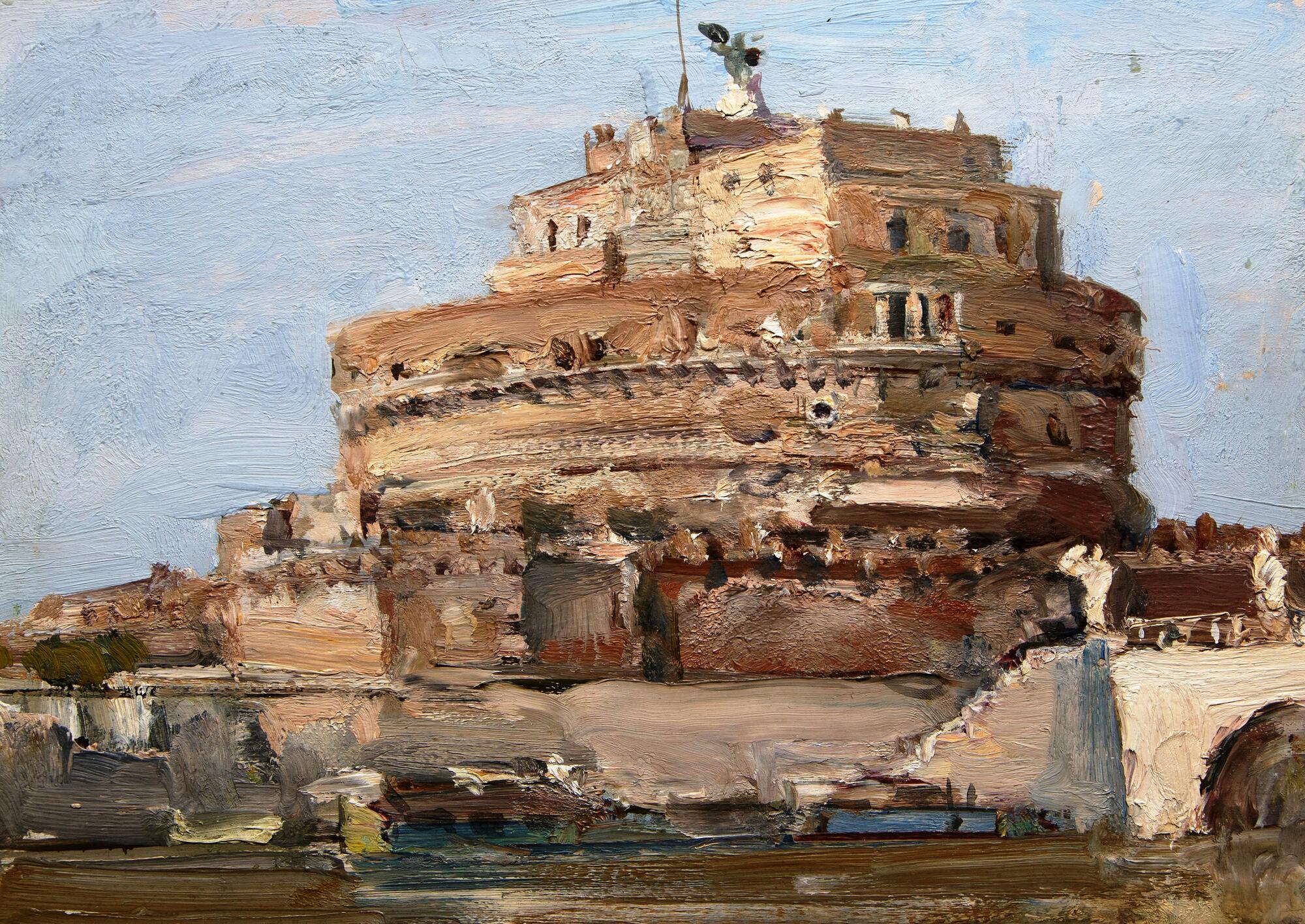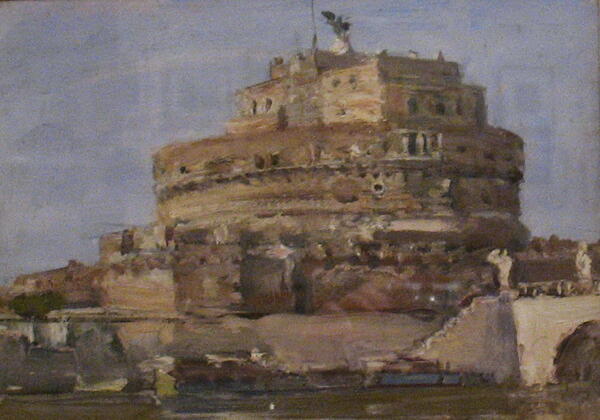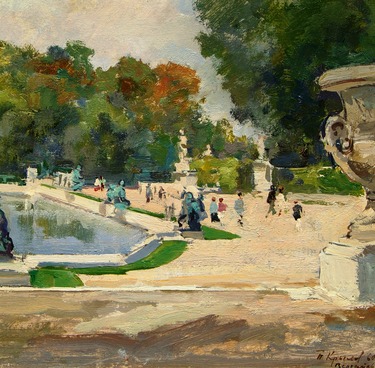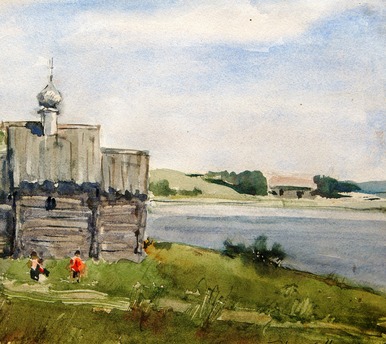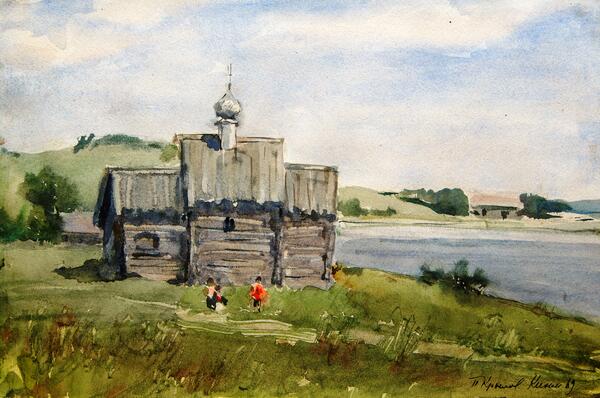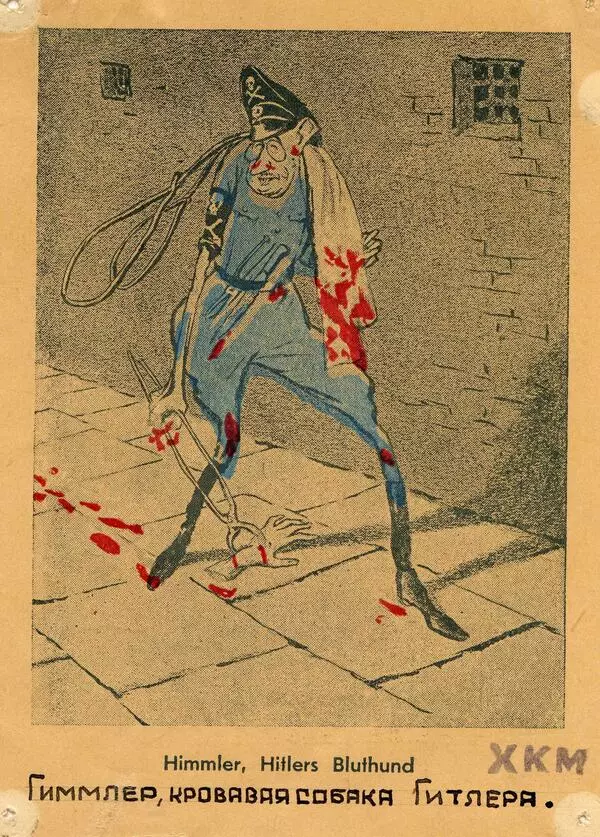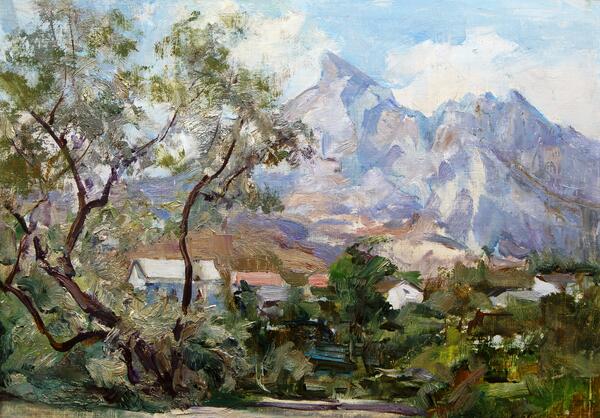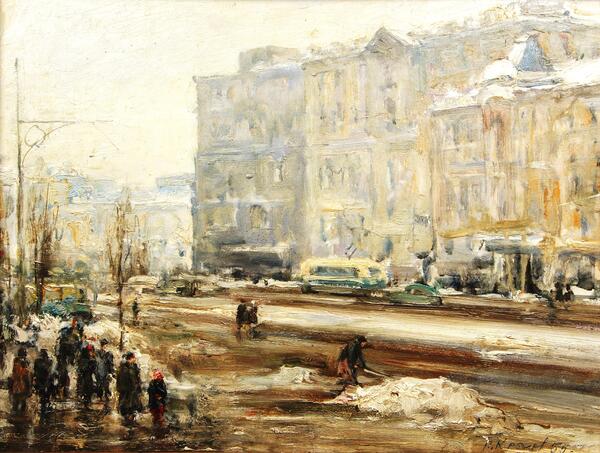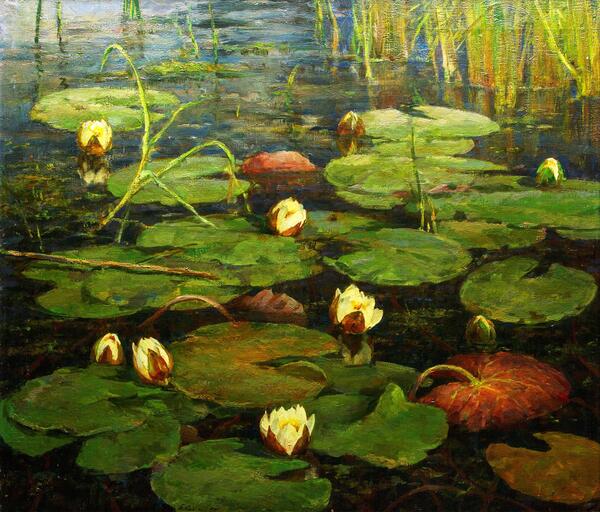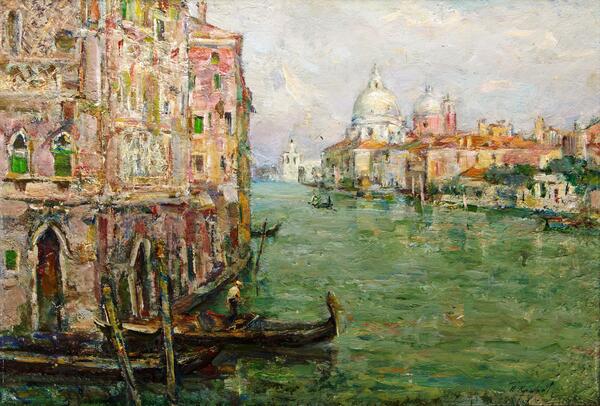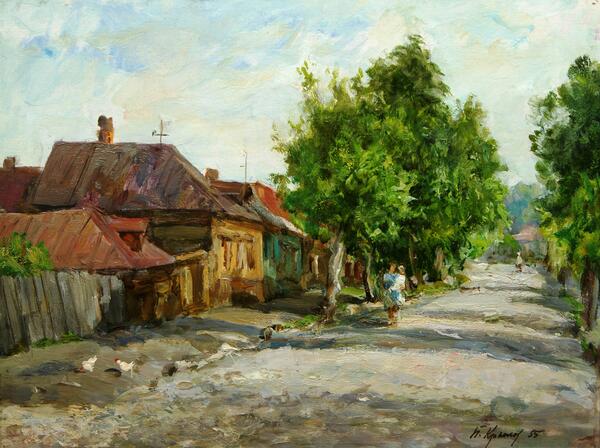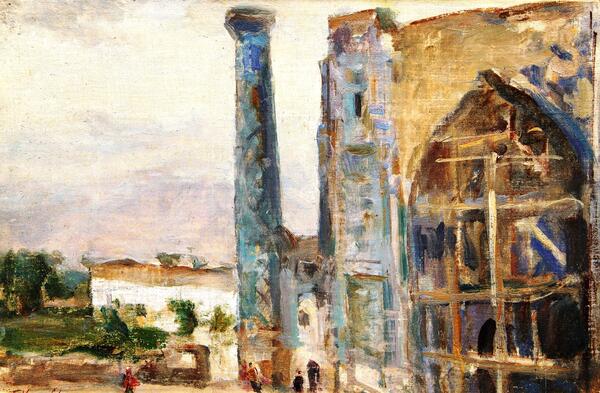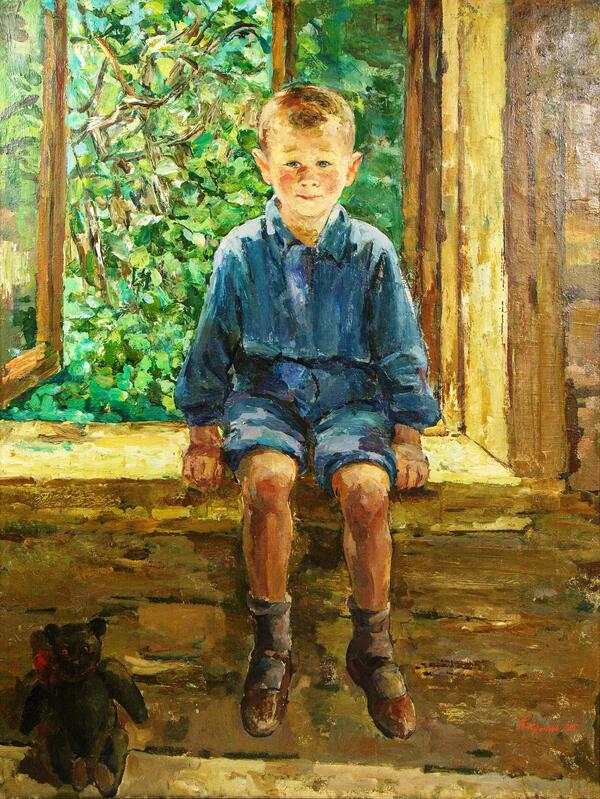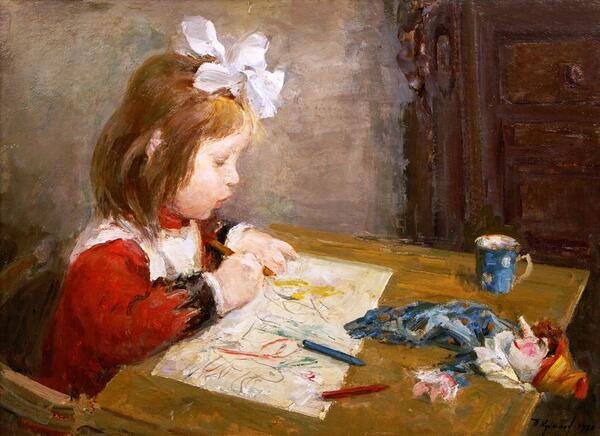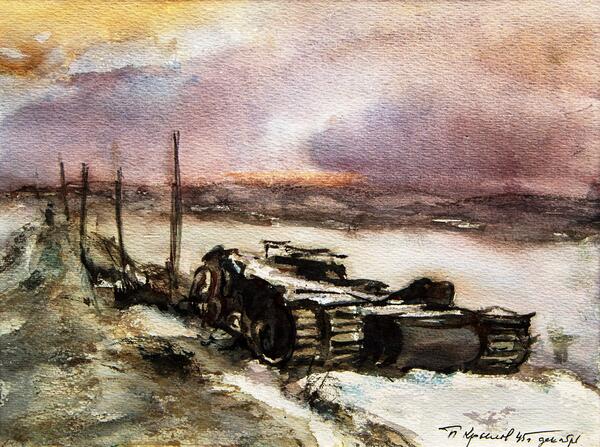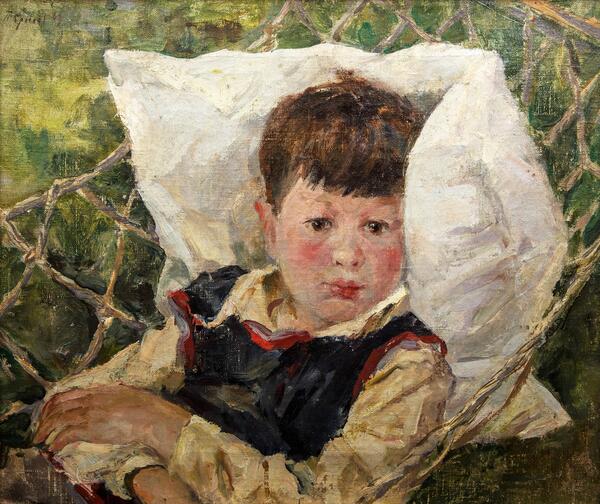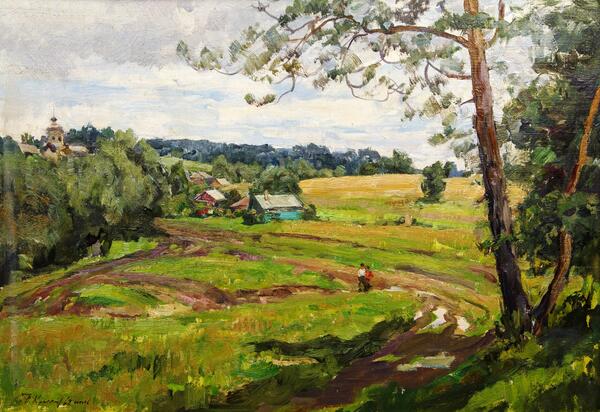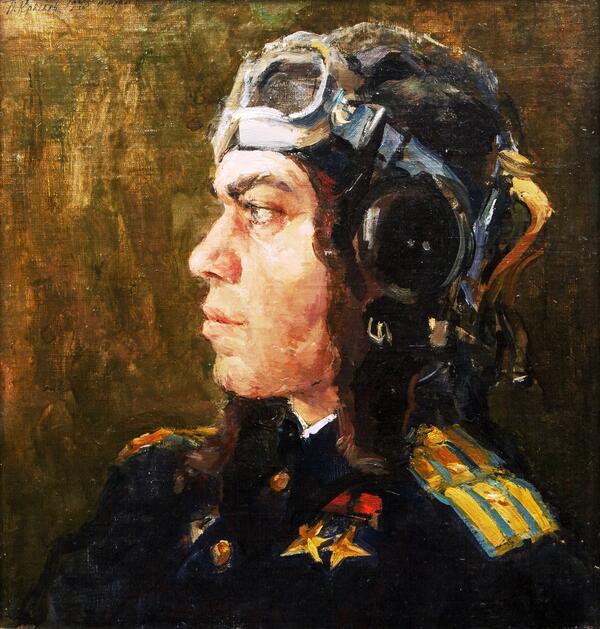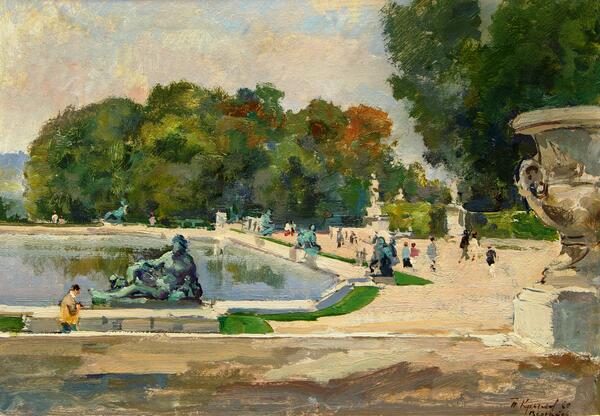Porfiry Nikitich Krylov dedicated more than 40 of his foreign landscapes to Rome. Having visited Italy for the first time to attend an international exhibition where the Kukryniksy presented their works made during the war, the artist fell in love with this country and visited it often. Porfiry Krylov painted views of Venice, Naples, Assisi, Bologna, Florence, Milan, Capri, Perugia, Arezzo, Siena, Pompeii, Sorrento and, of course, the capital of Italy — Rome. In his diaries, Porfiry Nikitich wrote:
Castel Sant’Angelo, Rome
We walked through the streets of Rome. We visited St. Peter’s Cathedral. Inside it, a bright ray of sunshine poured from the dome… We visited the Colosseum, and it too was spectacular… We saw the Arch of Constantine and ascended to the Forum and the Palatine Hill. The statue of Marcus Aurelius is truly one of the world’s wonders…
The artist dedicated several of his works to one of the most famous buildings in Rome — the Castel Sant’Angelo (Castle of the Holy Angel). This powerful brick structure is located on the right bank of the Tiber near the Vatican, and its history is shrouded in legends. It all began in 135 AD, when the Roman emperor Hadrian conceived to build a fortress as a tomb for himself and his family.
The tomb was completed after the emperor’s death, and according to historical chronicles it was vastly different from the one seen today — it had a different shape and was lined with marble. Over time, the structure was constantly reinforced and throughout its history, the castle served as a fortress, a prison and a papal residence. It housed the lodges of the emperors, halls of Justice and Treasures, as well as a library and the Vatican Archive.
The Mausoleum of Hadrian received its name — Castel Sant’Angelo — in 590 when the city of Rome suffered from great disasters: the overflowing Tiber flooded most of the city, and a major plague epidemic devastated it. Pope Gregory I called on the surviving citizens to make a three-day penitential procession and pray for God’s mercy.
Legend has it that on August 29, 590, while passing the walls of the tomb, the procession saw above them a bright purple silhouette of the Archangel Michael sheathing a fiery sword. The vision was interpreted as a sign of a speedy deliverance from adversity, which turned out to be true. The statue of an angel that crowns the building was erected to remind of this miracle.